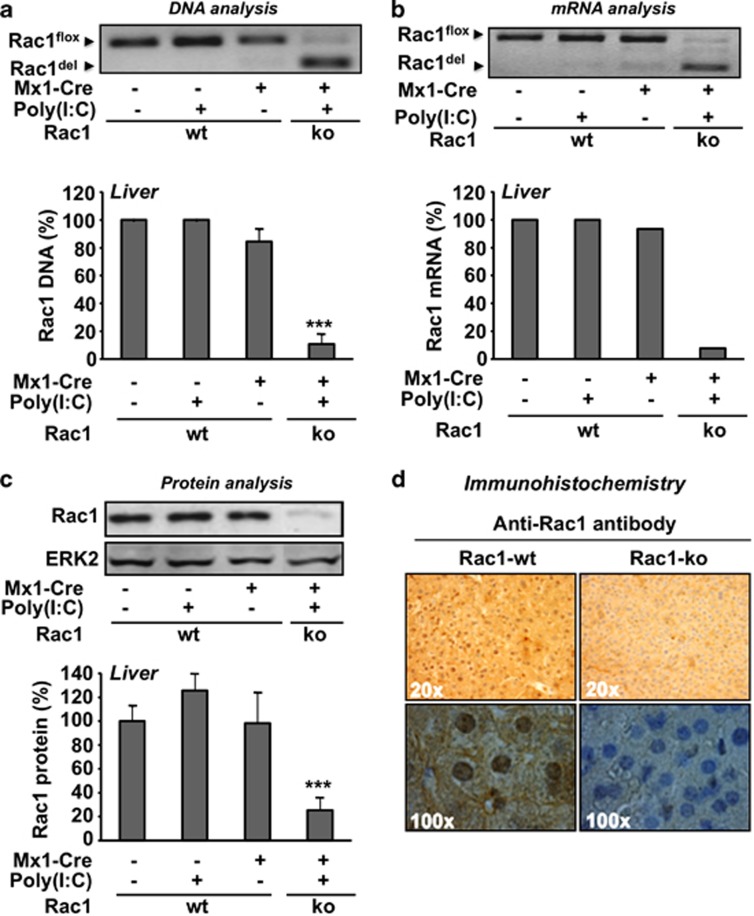Figure 1.
Efficacy of hepatic recombinational knockout of the rac1 gene following poly(I:C) treatment of transgenic Rac1flox/flox/Mx1-Cre mice. Racflox/flox mice either harboring the Mx1-Cre transgene (Mx1−Cre+) or not (Mx1−Cre−) were left untreated or were treated with poly(I:C) (3 × 0.5 mg) as described in Materials and Methods. Three weeks later analyses were performed. DNA (a), mRNA (b) and protein (c) were prepared from liver and analyzed as to the presence of rac1 gene, rac1 mRNA and Rac1 protein, respectively, as described in Materials and Methods. (a, b) To calculate the efficiency of the rac1 knockout on DNA and mRNA level, the total amount of DNA or mRNA was set to 100%. (c) ERK2 protein expression was monitored as internal protein loading control and the level in the untreated control (i.e., non-poly(I:C) treated mice) was set 100%. Quantitative data shown were obtained from n=2 (Mx1-Cre-) or n=3 (Mx1-Cre+) mice per group. For cDNA preparation, the mRNA samples isolated from the mice of each group were pooled. Arrows indicate the position of wild-type rac1 (Rac1flox) and after Cre-mediated deletion/knockout of the rac1 gene (Rac1del). ***P<0.001. (d) The amount of Rac1 protein in liver was analyzed by immunohistochemistry as described in Materials and Methods. Pictures were made with two different magnifications (top: × 20; bottom × 100). The result of one representative experiment is shown

